Posts Tagged ‘new puppy’
The Importance of Regular Veterinary Check-ups
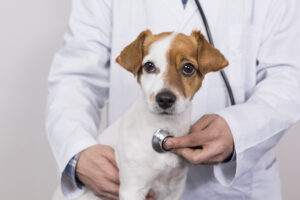 Regular veterinary check-ups are crucial for maintaining the overall health and well-being of your pets. These routine visits play a key role in preventative care and early detection of health issues. Here are some reasons why regular veterinary check-ups are important.
Regular veterinary check-ups are crucial for maintaining the overall health and well-being of your pets. These routine visits play a key role in preventative care and early detection of health issues. Here are some reasons why regular veterinary check-ups are important.
Preventative Care:
Regular check-ups allow veterinarians to administer vaccinations, parasite control, and dental care. Preventative measure can help protect your pet from various illnesses, ensuring they lead a healthier longer life.
Early Detection of Health Issues:
Pets, like humans, can develop health issues that may not be immediately apparent. Regular check-ups enable veterinarians to detect potential health problems early, often before symptoms become severe. Early detection can significantly improve the prognosis and treatment outcomes.
Disease Screening:
Veterinary check-ups may include screenings and tests for common pet diseases. These screenings can help identify conditions such as diabetes, kidney disease, and certain types of cancer in their early stages, allowing for timely intervention.
Dental Health:
Dental issues are common in pets, and they can lead to various health problems if left untreated. Regular veterinary visits often include dental examinations and cleanings, promoting good oral health and preventing dental diseases.
Nutritional Guidance:
Veterinarians can provide guidance on proper nutrition based on your pet’s age, breed, and health condition. A well-balanced diet is essential for maintaining your pet’s overall health and preventing nutrition-related issues.
Behavioral Assessment:
Veterinarians can assess your pet’s behavior during routine visits. Changes in behavior may be indicative of underlying health issues and addressing them early can prevent further complications.
Weight Management:
Maintaining a healthy weight is crucial for your pet’s well-being. Regular check-ups allow veterinarians to monitor your pet’s weight and provide guidance on nutrition and exercise to prevent obesity-related health issues.
Senior Pet Care:
As pets age, their healthcare needs may change. Regular check-ups become even more critical for senior pets to monitor and address age-related conditions, such as arthritis, dental problems, and organ dysfunction.
Client Education:
Veterinary visits are an opportunity for pet owners to learn about their pet’s specific needs, behaviors, and potential health risks. Education from veterinarians empowers pet owners to provide the best care possible.
In summary, regular veterinary check-ups are essential for preventative care, early detection of health issues, and ensuring that your pets lead healthy and happy lives. Establishing a consistent schedule of veterinary visits can contribute significantly to the overall well-being of your beloved companions. Contact our office today to schedule yours or if you have any questions.
10 Pet Health Myths Debunked
 There are several pet health myths that circulate widely. It’s important to separate fact from fiction for the well-being of our furry friends. Here are some common pet health myths debunked.
There are several pet health myths that circulate widely. It’s important to separate fact from fiction for the well-being of our furry friends. Here are some common pet health myths debunked.
1. Myth: A Warm, Dry Nose Indicates Illness
Debunked: A warm, dry nose does not necessarily mean a pet that is sick. Dogs and cats can have varying nose temperatures throughout the day. Factors like weather, hydration, and activity levels play a role.
2. Myth: Cats Always Land on Their Feet
Debunked: While cats have a remarkable ability to right themselves during a fall, it is not foolproof. Cats can still suffer injuries if they fall from a significant height.
3. Myth: Milk Is Good for All Cats
Debunked: Many adult cats are lactose intolerant and feeding them milk can lead to digestive upset and diarrhea. It is best to provide fresh water as their primary source of hydration.
4. Myth: Garlic and Onions are Safe for Dogs and Cats
Debunked: Garlic and onions contain compounds that can be toxic to pets and cause damage to their red blood cells. It’s advisable to keep these foods away from pets.
5. Myth: All Humans Medications Can be Given to Pets
Debunked: Many human medications are toxic to pets. Never give your pet any medication without consulting a veterinarian, as the wrong dosage or type can be harmful and even fatal.
6. Myth: Dogs Will Only Eat Grass if They’re Sick
Debunked: Some dogs eat grass simply because they like the taste or texture. While it’s not entirely clear why dogs eat grass, it’s not always a sign of illness.
7. Myth: Annual Vaccinations Are Always Necessary
Debunked: Some Vaccination needs may vary based on the pet’s health, lifestyle, and age. Some vaccines provide long-lasting immunity, and over-vaccination can have risks. Consult with your vet to create an appropriate vaccination schedule
8. Myth: Pet’s Age Seven Years for Every Human Year
Debunked: The rate at which pets age can vary by species and size. For example, small dog breeds tend to live longer than larger breeds. The one-size fits all calculation is not accurate.
9. Myth: Dry Cat Food Helps Clean Teeth
Debunked: While some dental diets may promote oral health. Relying solely on dry kibble is not a substitute for regular dental care. Brushing your cat’s teeth and providing dental treats can be more effective.
10. Myth: Scratching Furniture Means Cats are Being Destructive
Debunked: Scratching is a natural behavior for cats. Providing appropriate scratching posts and regularly trimming their nails can help redirect this behavior without resorting to punishment
Always give us a call for accurate information and advice tailored to your pet’s specific needs.
5 Ways to Keep Your Dog Safe in the Snow
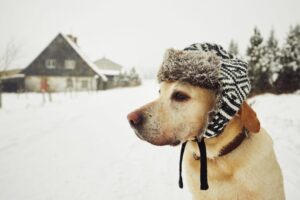 Keeping a dog safe in the snow is important, as cold weather can pose various risks to their health and well-being. Here are five ways to ensure your dog stays safe in snowy conditions.
Keeping a dog safe in the snow is important, as cold weather can pose various risks to their health and well-being. Here are five ways to ensure your dog stays safe in snowy conditions.
-
- Ensure Adequate Shelter: Ensure that your dog has access to a warm and dry shelter, such as a well-insulated doghouse or a heated indoor space. Limit the time your dog spends outdoors in extreme cold weather, especially during snowstorms.
- Use Protective Gear: Invest in appropriate winter gear for your dog, such as a waterproof and insulated coat. Booties can protect their paws from ice, snow, and harmful chemicals like de-icing salts. Make sure the gear fits properly and doesn’t cause any discomfort.
- Monitor Paw Health: Snow and ice can accumulate between the paw pads, leading to discomfort or injuries. Regularly check your dog’s paws for ice balls, cuts, or signs of frostbite. Wipe their paws with a damp cloth to remove any salt or chemicals.
- Keep Them Hydrated: Cold weather can be dehydrating and dogs may be less inclined to drink water when it is cold. Ensure that your dog has access to fresh water at all times. Dehydration can contribute to health issues, including susceptibility to hypothermia.
- Adjust Diet and Monitor Weight: Dogs my burn more calories in cold weather to stay warm. Adjust their diet accordingly and monitor their weight. A well-nourished dog is better equipped to handle the challenges of cold weather.
Remember that individual dogs have different tolerance levels for cold weather, and factors such as breed, age, and health should be taken into consideration. Always obeserve you dog for signs of discomfort or stress, and consult with your veterinarian if you have specific concerns about your dog’s well-being in snowy conditions.
If at any time you have concerns or questions, do not hesitate to contact our office. Have a safe and fun winter with your pup!
Should Your Dog Get a Choker Collar? Here’s What You Need to Know
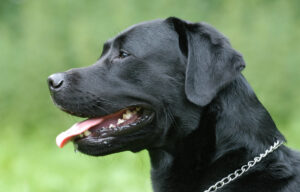 Whether or not your dog should wear a chain choker collar is a matter of debate among dog trainers, veterinarians, and animal welfare organizations. There are several factors to consider before deciding to use a chain choker collar:
Whether or not your dog should wear a chain choker collar is a matter of debate among dog trainers, veterinarians, and animal welfare organizations. There are several factors to consider before deciding to use a chain choker collar:
1 Training Methodology: Chain choker collars are often used in training as a correction tool. However, they are associated with aversive training methods that rely on punishing undesirable behaviors through discomfort or pain. Many modern dog trainers advocate for positive reinforcement-based training methods, which focus on rewarding desired behaviors rather than punishing unwanted ones.
2 Breed and Size of the Dog: Smaller or more delicate dog breeds may be more vulnerable to injury when using chain choker collars. Breeds with thin necks, like Greyhounds, may be at a higher risk.
3 Health and Behavior Issues: Some dogs may have underlying health issues or behavioral problems that make the use of chain choker collars risky or inappropriate. For example, dogs with respiratory problems, brachycephalic breeds (i.e., Bulldogs), or fearful and aggressive should not be subjected to such collars.
4 Training Experience: If you are not experienced in using chain choker collars correctly, there is a risk of causing harm to your dog or reinforcing negative behaviors unintentionally. It is crucial to learn how to use these collars properly if you choose to use them.
5 Alternatives: There are many alternative training tools and methods available that can effectively train dogs without resorting to aversive methods. Positive reinforcement, clicker training, and head halters are examples of more humane and effective training tools.
6 Consultation with a Professional: If you are considering using a chain choker collar, it is strongly recommended that you consult with a professional dog trainer or behavioralist who can assess your dog’s specific needs and help you make an informed decision.
7 Local Laws and Regulations: Some places have laws and regulations that restrict or even ban the use of certain dog collars, including chain choker collars. Be sure to check your local laws and follow them accordingly.
If you have any questions about this or anything else, don’t hesitate to contact our office.
National Mutt Day: Here Are Some Ways To Celebrate
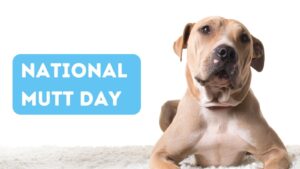 Question of the month. What do Higgins ( the dog from the film Benji) , Laika ( the Soviet space dog), Pluto (Mickey Mouses’s pet dog) and Clifford the Big Red Dog all have in common? Believe it or not, they are all famous mixed-breed dogs and on July 31, it is National Mutt Day.
Question of the month. What do Higgins ( the dog from the film Benji) , Laika ( the Soviet space dog), Pluto (Mickey Mouses’s pet dog) and Clifford the Big Red Dog all have in common? Believe it or not, they are all famous mixed-breed dogs and on July 31, it is National Mutt Day.
National Mutt Day, also known as National Mixed Breed Dog Day, is a day dedicated to celebrating mixed breed dogs and raising awareness about their value as pets. It is observed on two different dates throughout the year: July 31st and December 2nd.
On National Mutt Day, people are encouraged to adoopt mixed breed dogs from animal shelters and rescue organizations rather than buying from breeders. The day aims to promote the adoption and well-being of mixed breed dogs and to combat the stigma and misconceptions surrounding them.
Mixed breed dogs, often referred to as mutts, are dogs that have a combination of different breeds in their ancestry. They can exhibit a wide range of characteristics, both in terms of appearance and temperament. Adopting a mutt can be a rewarding experience, as they often have unique and diverse traits.
If you are interested in celebrating National Mutt Day, you can consider doing the following:
- Visit your local animal shelter or rescue organization: Spend some time with the mixed breed dogs available for adoption, and consider bringing one into your family if it is the right fit for you.
- Volunteer at an animal shelter: Offer your time and help by volunteering at a local shelter. You can assist with walking the dogs, cleaning their encolosures, or providing general care.
- Spread awareness: Use your social media platforms to share information about National Mutt Day and the benefits of adopting mixed breed dogs. Encourage others to consider adopting a mutt or donate to local animal welfare organinzations.
- Organize an event: Consider organizing an event in your community that promotes adoption and celebrates mixed breed dogs. This could include activities such as doggie playdates, training sessions, or informational sessions about responsible pet ownership.
Here at Olsen Veterinary Clinic, we take pride in taking care of EVERY animal, no matter the breed or type. If you have any questions about your pet, don’t hesitate to contact our office today!
How to Choose the Right Flea and Tick Medicine for Your Dog
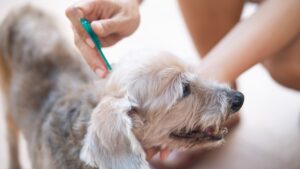 With the weather being nice, people and pets are tired about being cooped up inside. They are starting to enjoy the fresh air, the calm breezes in their face and the warmth of the sun. But whether it is a walk in the park, a weekend camping along the lake or even lounging around your front yard, fleas and ticks could be waiting to latch onto your pet and hitch a ride. So because of this, application of a flea and tick control or collar is essential to prevent them from infesting your home.
With the weather being nice, people and pets are tired about being cooped up inside. They are starting to enjoy the fresh air, the calm breezes in their face and the warmth of the sun. But whether it is a walk in the park, a weekend camping along the lake or even lounging around your front yard, fleas and ticks could be waiting to latch onto your pet and hitch a ride. So because of this, application of a flea and tick control or collar is essential to prevent them from infesting your home.
There are many factors to consider when choosing the optimal product. One must decide if they want a collar, topical or chewable tablet. Each one has their pro’s and con’s about them. The collars and topical products such as Frontline or Advantage have been around a lot longer and may be less expensive to buy, but we have seen breaks in protection because the fleas and ticks have gained resistance or the product has not been used properly. Some of those products are approved by the EPA so they might not be safe to use on your pet. Recently new products such as Nexguard or Bravecto have been developed that are taken orally. Because they are newer products, the fleas and ticks have not developed a resistance to them. Also since they are ingested, they are approved by the FDA to assure their safety to the pet.
There are several oral products available like Simperica Trio that will also control other parasites, along with fleas and ticks. So they may be more expensive but be more convenient in the long run.
The best thing to do is to have a conversation with your vet about what is best for your pet, as well as what works for you financially. We are happy to have a conversation about any concerns you have. Prevention is key, so make sure to protect your furry companion this summer. Contact our offices today!
National Pet Theft Awareness Day
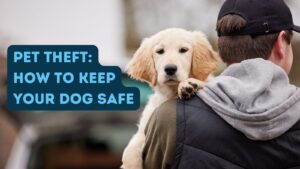 Our pets are very important to us and we rely on them for comfort and support every day. So it is devastating and hard to believe that a pet would be stolen. Every year about 2 million pets go missing with only about 10 percent returned home. These figures have alarmingly risen about 37 percent since 2007. So in honor of National Pet Theft Awareness Day which is being celebrated on February 14, I am going to blog about why they are stolen and how to reduce the possibility of your pet being dog- or cat- napped.
Our pets are very important to us and we rely on them for comfort and support every day. So it is devastating and hard to believe that a pet would be stolen. Every year about 2 million pets go missing with only about 10 percent returned home. These figures have alarmingly risen about 37 percent since 2007. So in honor of National Pet Theft Awareness Day which is being celebrated on February 14, I am going to blog about why they are stolen and how to reduce the possibility of your pet being dog- or cat- napped.
There are quite a few reasons why someone may steal a pet. According to PetFBI, these are the most common:
- Pet Flipping: Popular breeds of dogs can be “resold” online or in the paper.
- Reward: Some pets are stolen in hopes the owner will offer a reward, which the thief will then claim
- Puppy Mills: Pets that have not been spayed or nuetered may be turned over to backyard breeders or puppy mills
- Dog Fighting Rings: Small dogs and cats have been stolen to be used as “bait” for dog-fight training. The large breed dogs are often used as dog fighting candidates.
- Neighbors: If pets have been known as “nuisances” neighbors have been known to take animals and dump them in other locales.
- Relatives: Sadly, many pet thefts come from family members who are upset with you like in a divorce or family dispute
- Good Intentions: Not all pet-nappings are maliscious. A good-hearted person may believe that they are helping your pet if they feel that the pet is being neglected in some way. This is why you never leave your pet tied up in your yard, keeping them outside only, or have a pet that has signs of being neglected.
There are steps that owners can take to prevent their pets from being stolen. First and foremost, HAVE YOUR PET MICROCHIPPED and make sure that their records are updated. Remember that the microchip is only as good as the registration, so make sure that they are microchipped. In addition, you can:
- Your pets should not be allowed to run free outdoors unattended and make sure that your pets are always wearing a collar and identification.
- Spay and neuter your pets
- Don’t tie up your dog outside of a restaurant or store and never leave your pet in a car.
- Keep dog doors and fence gates locked when you are not at home.
- Have updated photos of your pet with emphasis on special markings
- Install cameras. Indoor and outdoor camera networks are ideal for keeping your pet safe.
Nothing is scarier or upsetting to come home and find your pet missing. It is of most importance to act quickly as every minute matters when you are looking for your pet, whether they have escaped from your yard or have been dog-napped.
If you believe that they have been stolen, immediately report it to the police. This provides a record that is documented and can be used for further action. It is important to canvas the area on foot every day. Creating a “Lost Pet” poster and placing throughtout the community helps others watch for your pet in cars, on the street or at neighbors. Post a lost pet report through your microchip company and your animal control. Avoid posting a reward is being offered.
If you have any other questions about microchipping or keeping your pet safe, do not hesitate to contact our office today.
New Puppy Checklist: Everything You Need Before Welcoming Your New Furry Friend into Your Life
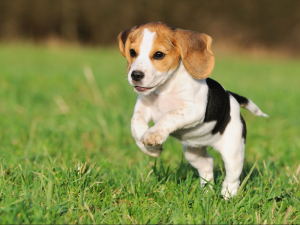 Bringing a new puppy into your home is an exciting time but requires some preparation for your home. Puppies require a lot of attention and care, so this checklist will be beneficial if you are unsure where to start with the basics for your new puppy.
Bringing a new puppy into your home is an exciting time but requires some preparation for your home. Puppies require a lot of attention and care, so this checklist will be beneficial if you are unsure where to start with the basics for your new puppy.
Some companies have created puppy starter kits. For example, this box made by Chewy has a set of toys, treats, and potty-training materials to help you with your new puppy. All top-rated items, new puppy owners are sure to appreciate it. It also makes a great gift. It can be found here.
Beyond toys, treats, and potty-training materials, puppies need food and water bowls. There are a lot of different options, but one that is slightly lifted is easier for your puppy to eat from. If you get one with walls, it is more likely your floor will stay cleaner.
Also necessary is a bed for your pet. An elevated bed is good for keeping your dog lifted and is helpful for teaching different cues. Other more traditional options are great too, especially as your pups are growing quickly.
Some owners choose to crate their puppies, and there are a lot of options but must be replaced as dogs grow. Crates help dogs have a safe place, especially as they adjust to a new space and lifestyle.
Also important for your new puppy is a leash. There are many kinds of leashes, with different uses. It will most likely be trial and error to find what works for you and your puppy, so be prepared for a trial period.
Puppies require hygiene efforts. This includes toothbrushes, toothpaste, nail clippers, brushes, and bathing supplies. Providing exposure to these items while young makes it less scary for adult dogs and easier for their owners.
Lastly, a collar is a great way to express your and your pet’s personality. Be prepared for your new pup with a collar and tag to provide some protection and peace of mind.
The last step for a new puppy is establishing an appointment with your veterinarian to get started on vaccinations and discuss your new dog’s life! Feel free to contact Dr. Olsen of Olsen Veterinary Clinic at 618-656-5868 to set up an appointment or discuss any questions!
2022 Pet Gift Guide
 Don’t leave your pet out of the holiday fun! Furry friends like to open gifts too! Here are a few options to show your four-legged pal some love.
Don’t leave your pet out of the holiday fun! Furry friends like to open gifts too! Here are a few options to show your four-legged pal some love.
The Pupsicle is a great opportunity to give your dog a new treat experience. You freeze your dog’s favorite food in the mold, then when it is time for a treat, you put the frozen treat in the Pupsicle. When they’re done, you’re able to open the ball, wash it, and repeat! Find it here.
You can liven up your cat’s drinking experience with a cat fountain. Some cats enjoy moving water more than still, and a plastic cat fountain such as this one here circulates water for cats to drink.
Say you want to get a gift for your favorite pet owner in your life. The company West and Willow makes custom pet portraits that any pet owner will be sure to love. You can find them linked here.
Social media has allowed several pets to become Tik Tok famous. Pets have been trained to use buttons programmed with specific words to communicate with their owners. You can find a starter kit here to try your pet’s hand at internet fame.
For cats that love to play but whose owners don’t love obnoxiously bright-colored toys laying around the house, these handmade cat toys from an Etsy seller are stylish and aesthetically pleasing. They are environmentally friendly as well, made from leftover upholstery fabric. These toys are filled with grounds of a plant called silvervine which is like catnip. If your cat doesn’t really like regular catnip, silvervine is a great alternative. Find these toys here.
Whether you are looking for a gift for your furry friend or a close pet-lover, these gifts are sure to please all. Feel free to contact Dr. Olsen at Olsen Veterinary Clinic at 618-656-5868 with any questions!
Dr. Olsen’s Breed Spotlight: The Tibetan Mastiff

Tibetan Mastiff
The Tibetan Mastiff is a large-size Tibetan dog breed. It has a medium to long double coat and is found in many colors. These can be solid black, black and tan, various shades of red (from pale gold to deep red), and bluish gray. Sometimes, they can have white markings around their neck, chest, and legs.
The term mastiff goes back to when the Europeans first went to Tibet. They used the term to refer to nearly all large dog breeds in the West. Early Western visitors misnamed several of its breeds through this process. For example, the Tibetan terrier is not a terrier, and the Tibetan spaniel is not a spaniel.
In the early 20th century, the Prince of Wales, George, introduced a pair of Tibetan Mastiffs to the United Kingdom, which caused the breed to become prevalent enough in England to be shown at the Crystal Palace show in 1906. Since 1980, the breed has been gaining in popularity worldwide.
The Tibetan Mastiff is a primitive breed and retains the general hardiness that would be required of them to survive in the harsh environment of Tibet, Ladakh, and other high-altitude Himalayan regions. Because of this, they tend to have strong instinctive behavior, including canine pack behaviors. These help the breed survive in harsh environments. It has maintained many of the same biological processes as wolfs and other animals.
The dog has a long, double coat whose length depends ultimately on the climate. Uniquely, the Tibetan Mastiff lacks the unpleasant big-dog smell that affects many other large dog breeds. Their coat can shed dirt and odors on its own. Many of the dogs shed somewhat throughout the year, but there is generally one great molt in late Winter or early Spring.
Tibetan Mastiffs have a life expectancy of around 10-16 years, but this span can vary. Generally, the breed has fewer genetic health problems than many other breeds. However, cases can be found of hypothyroidism, entropion, ectropion, distichiasis, skin problems, etc. As with most large breeds, some will suffer from elbow or hip dysplasia.
Hypothyroidism is common in Tibetan Mastiffs, along with many other large “northern” breeds. They should be tested periodically throughout their lives using a complete thyroid panel. However, because the standard thyroid levels were established using domestic dog breeds, test results must be considered in the context of what is “normal” for the breed, not what is standard for all breeds. Many Tibetan Mastiffs will have “low” thyroid values, but no clinical symptoms. Vets and owners differ on the relative merits of medicating dogs that test “low” but are completely asymptomatic.
The Tibetan Mastiff is sure to be a large lovable friend for any owner. Feel free to contact Dr. Olsen at Olsen Veterinary Clinic with any questions at 618-656-5868.
